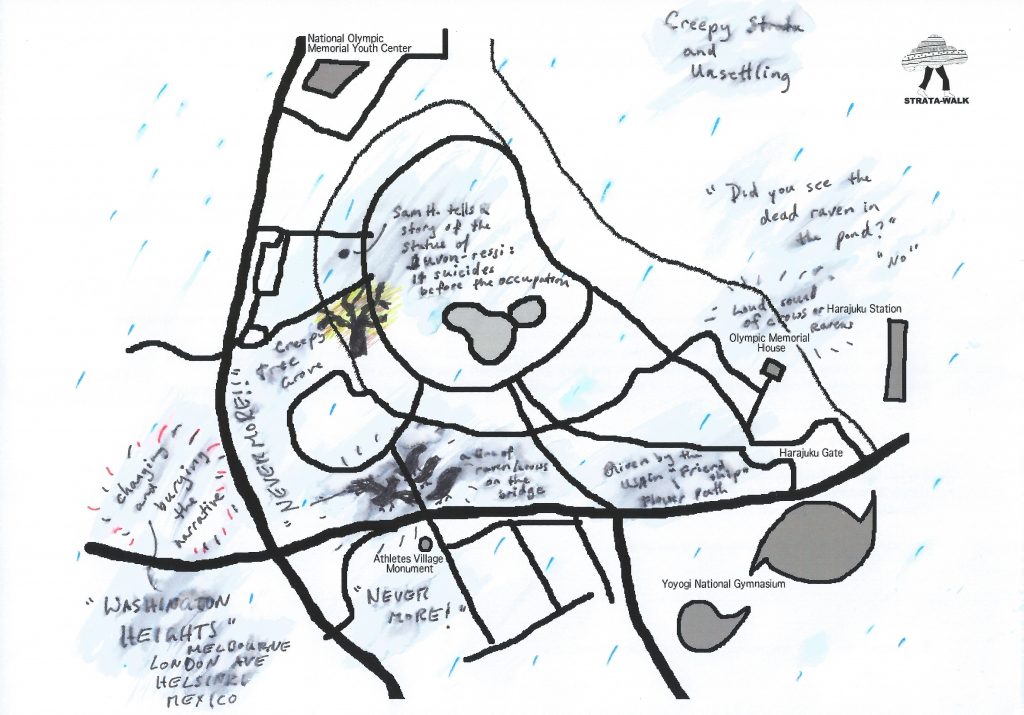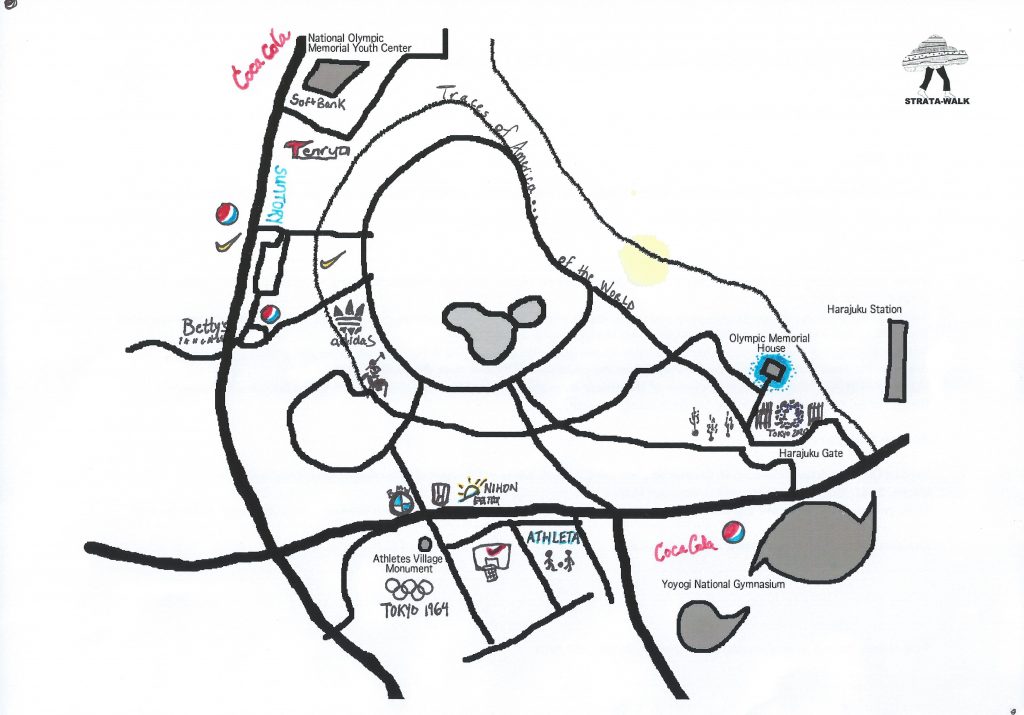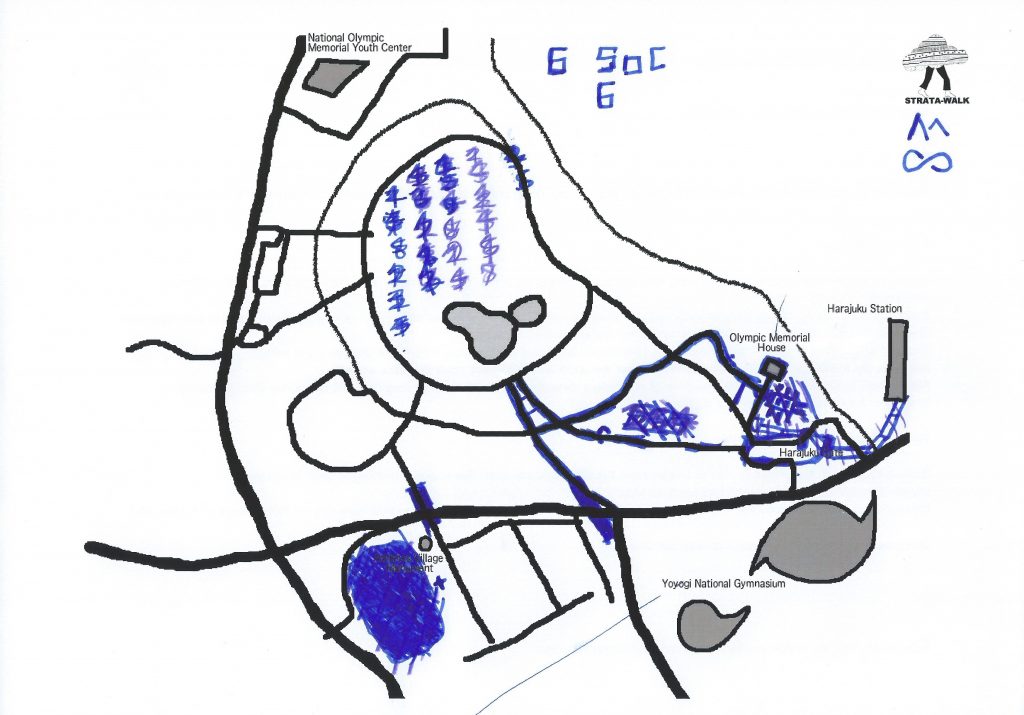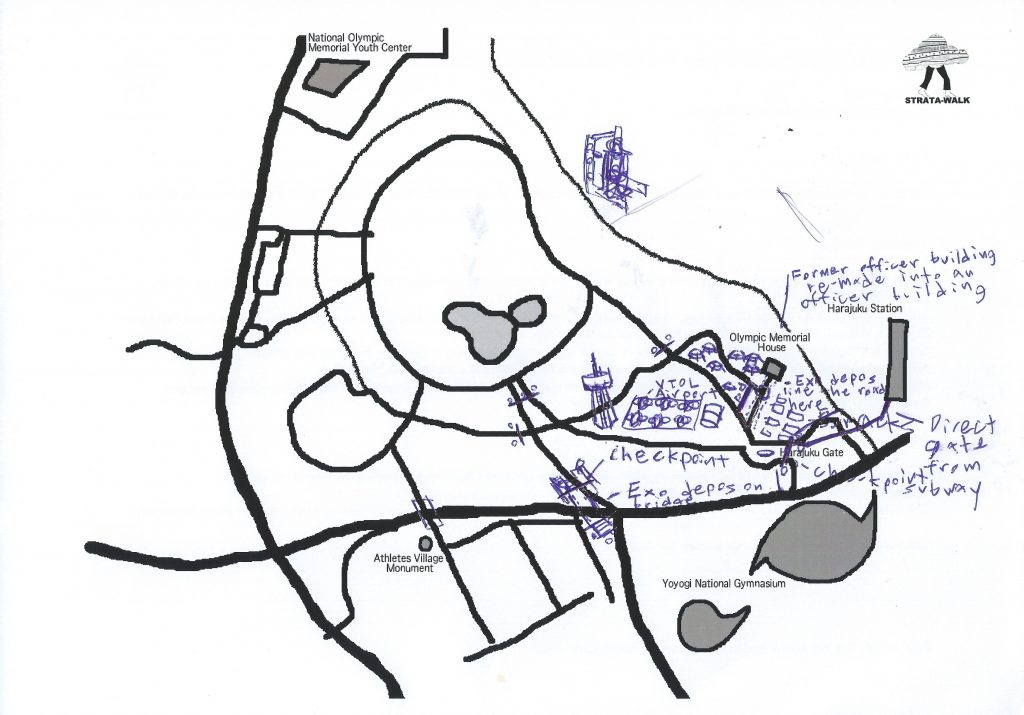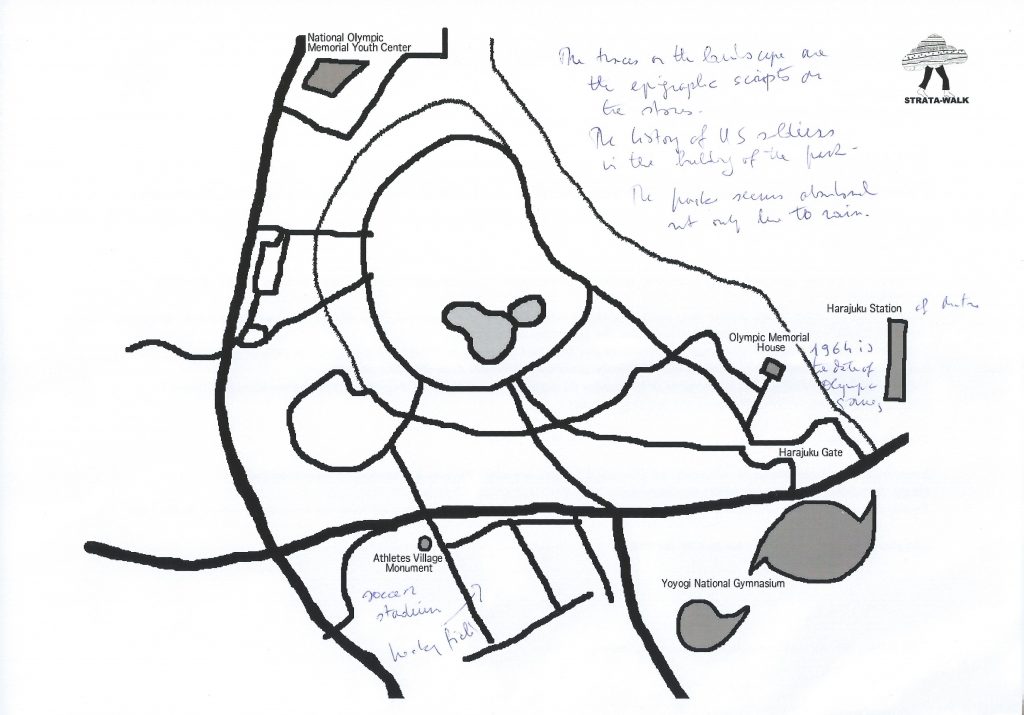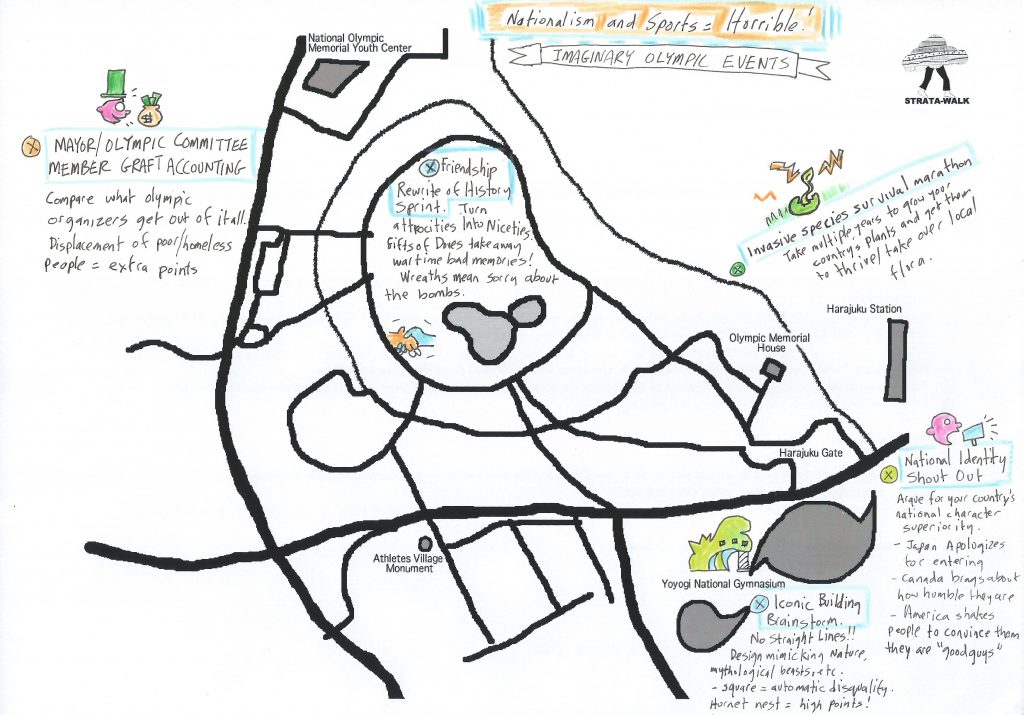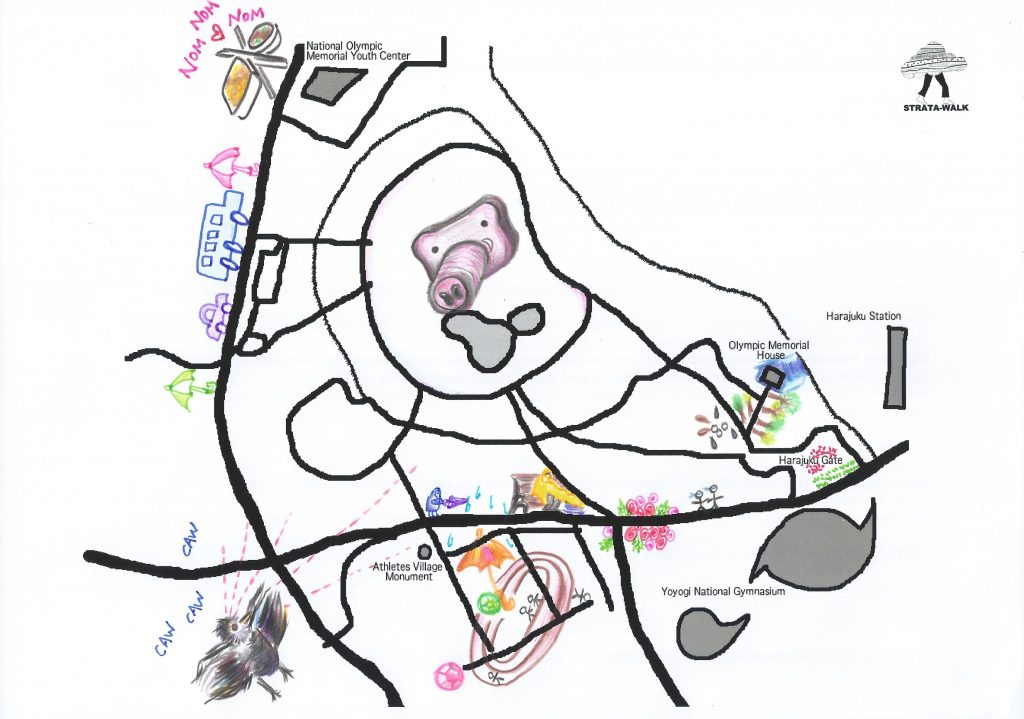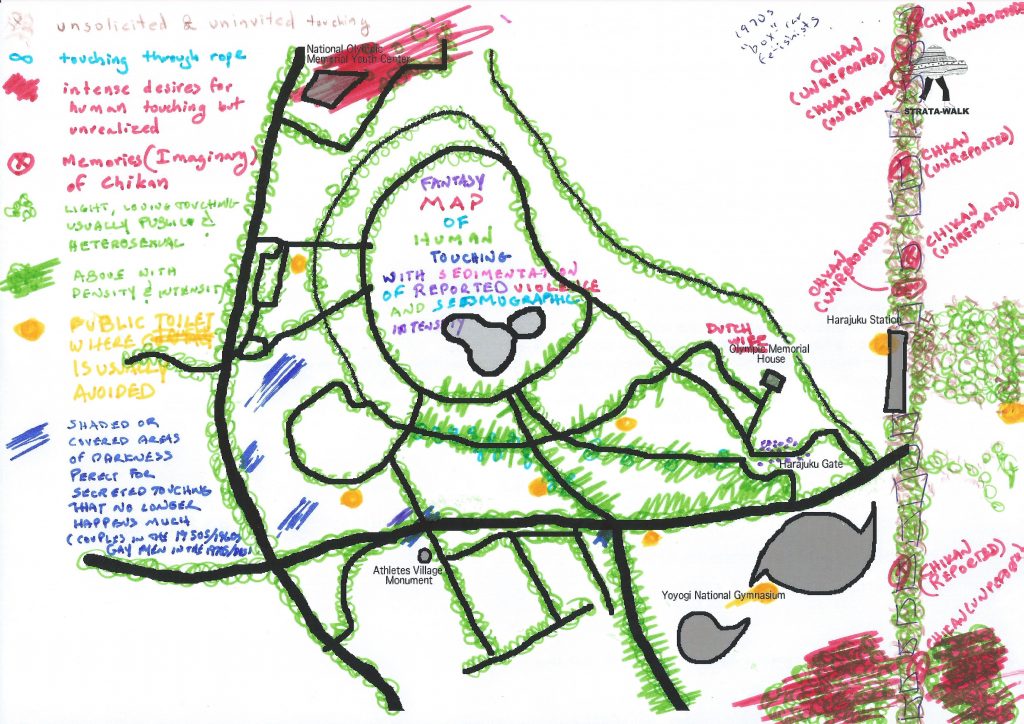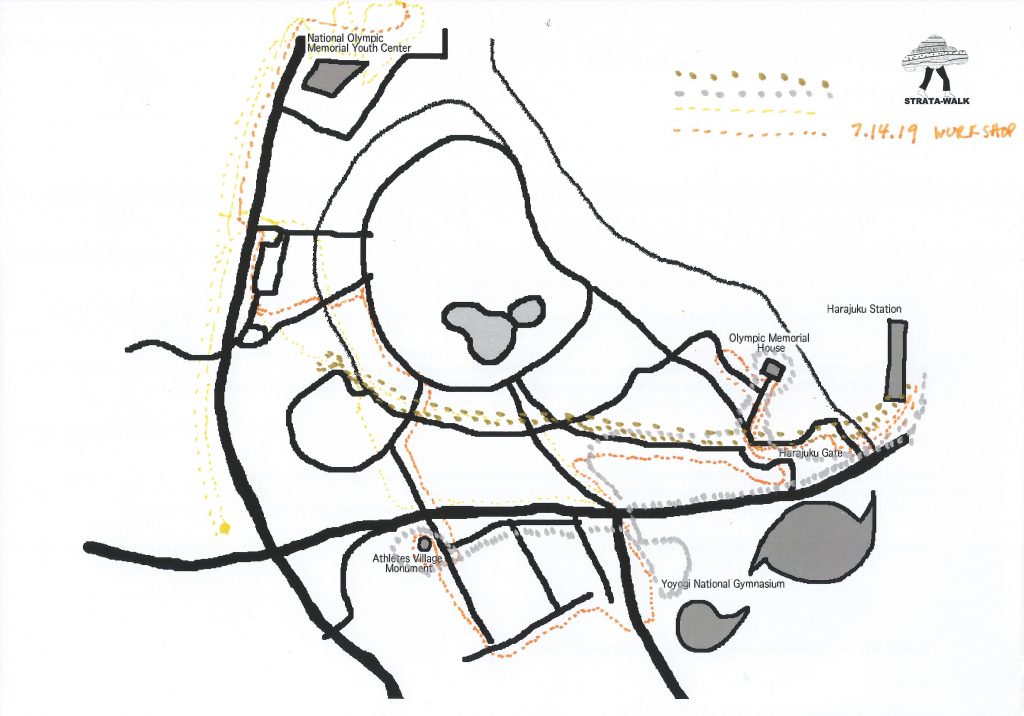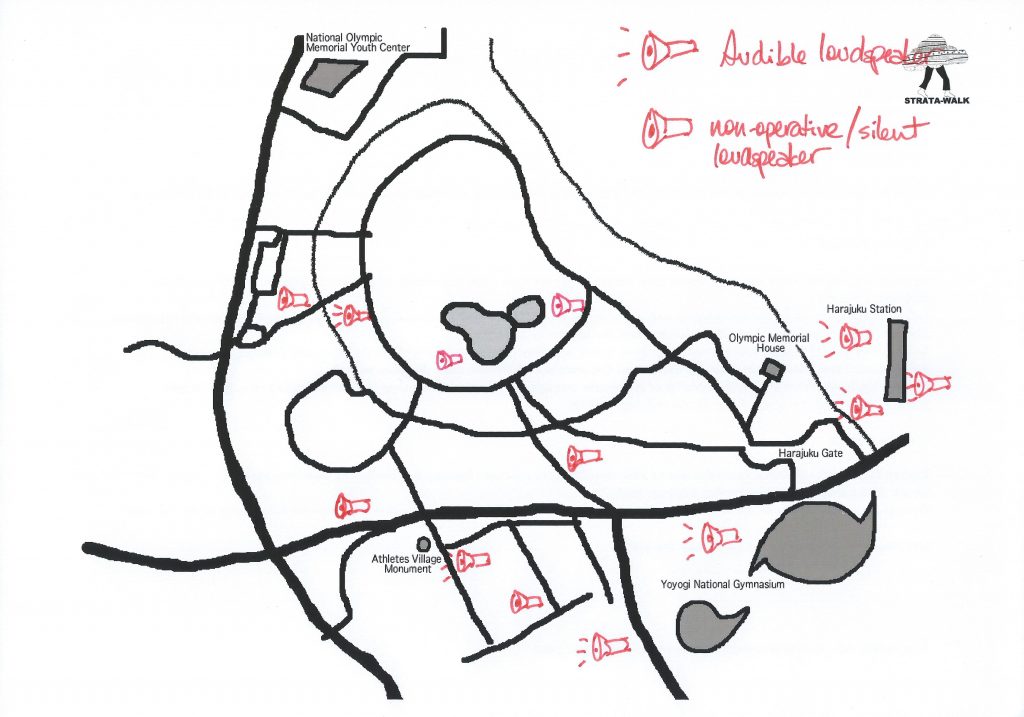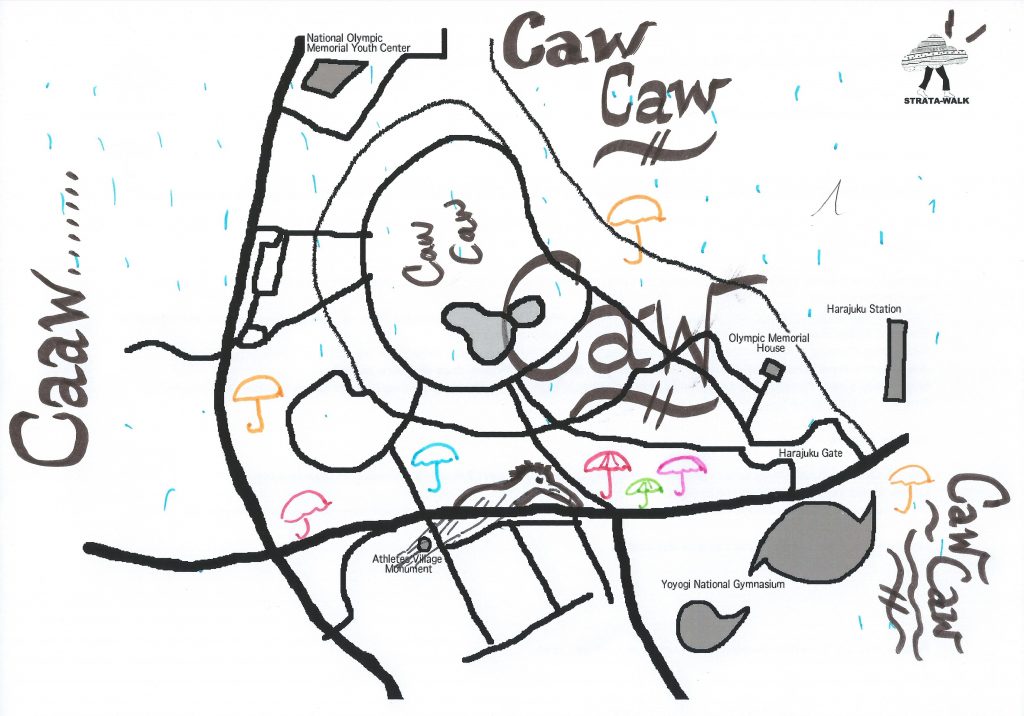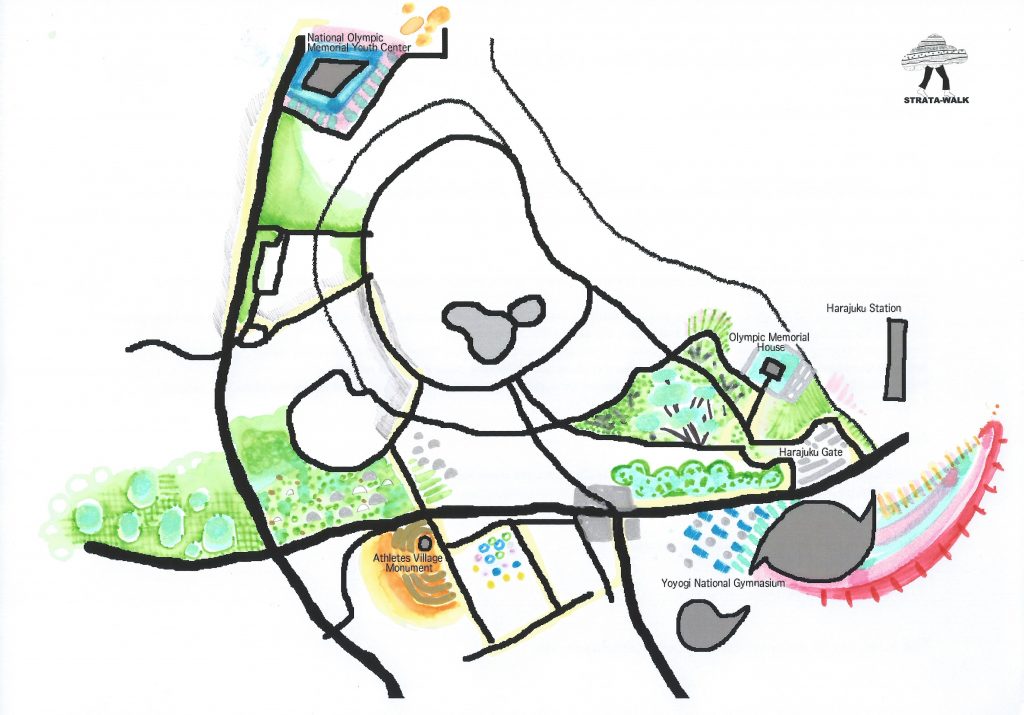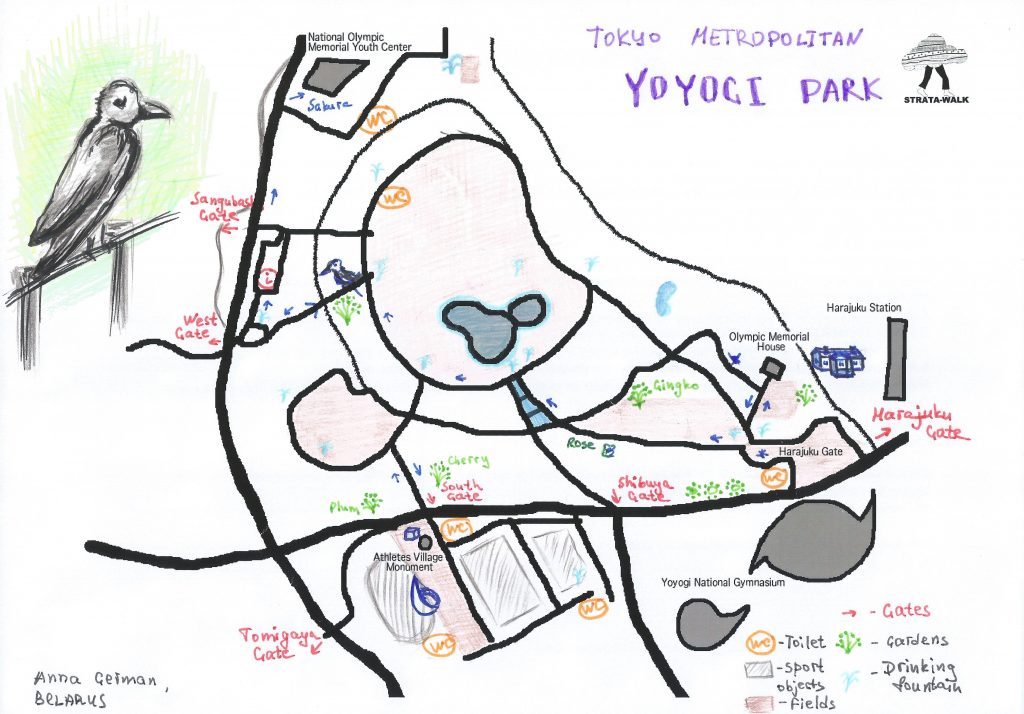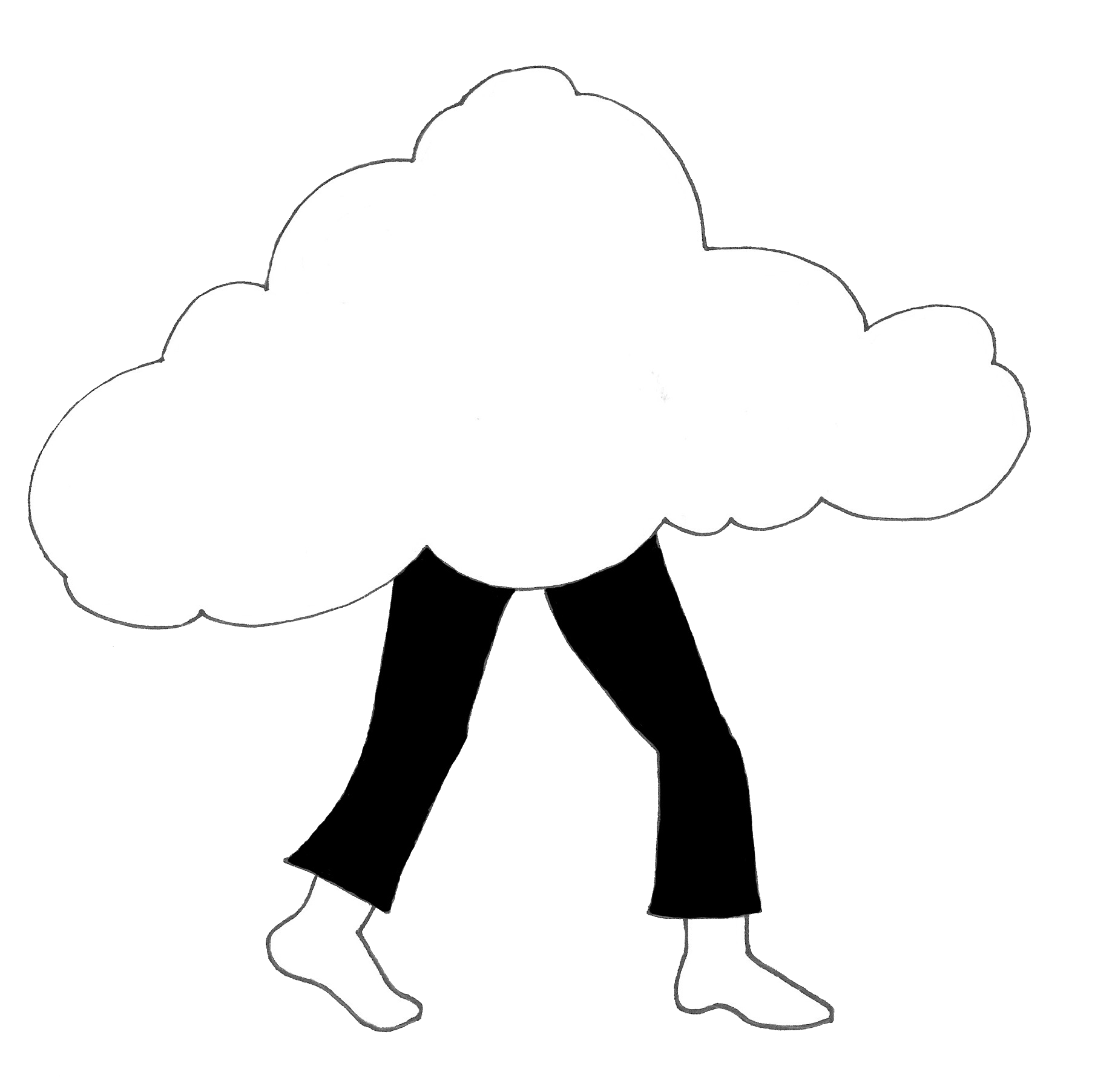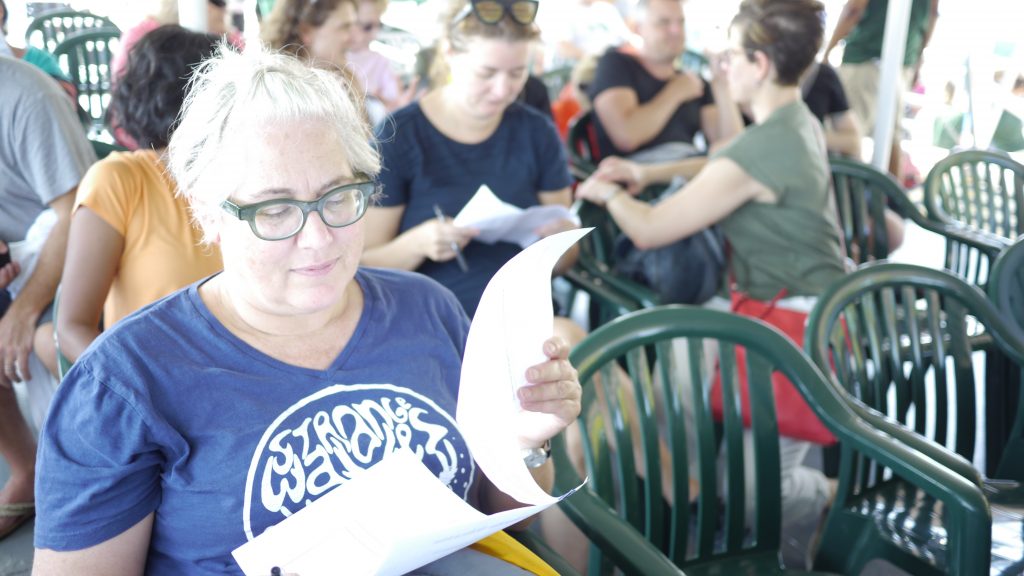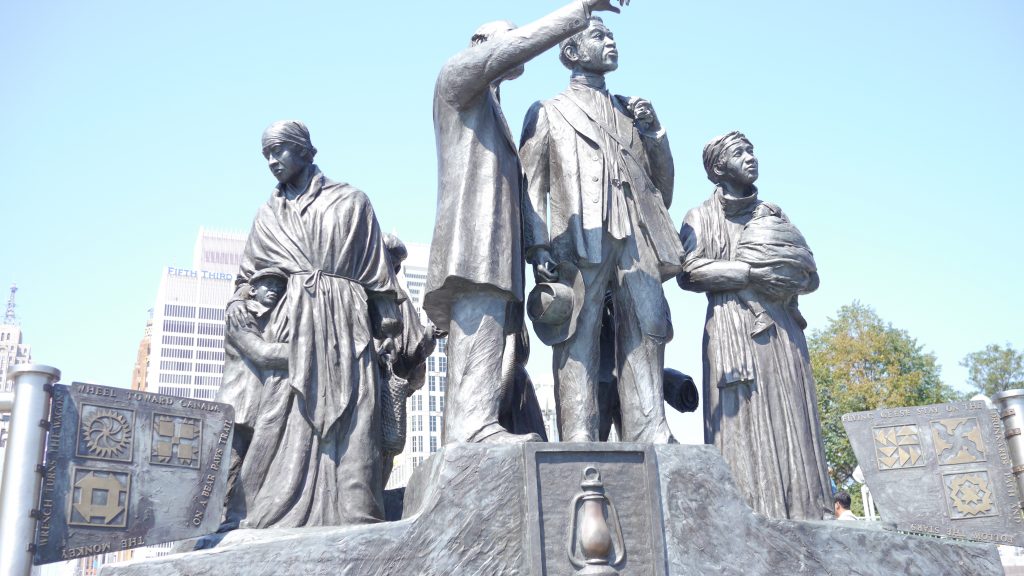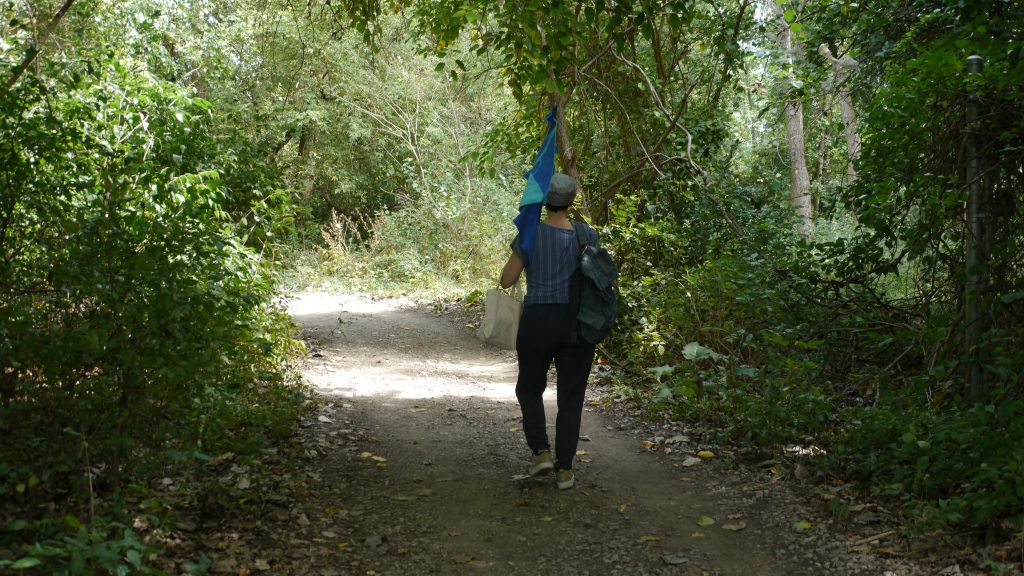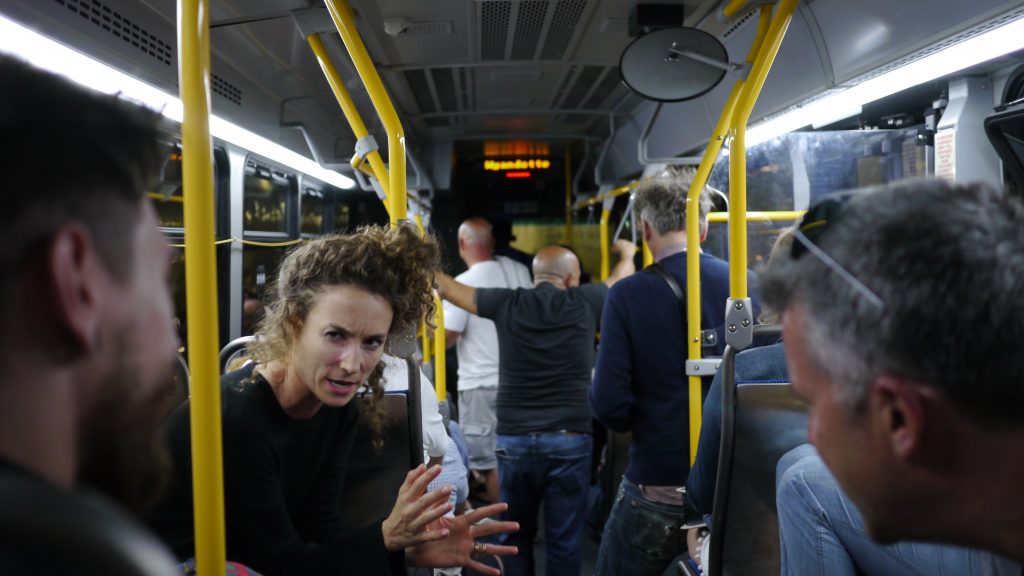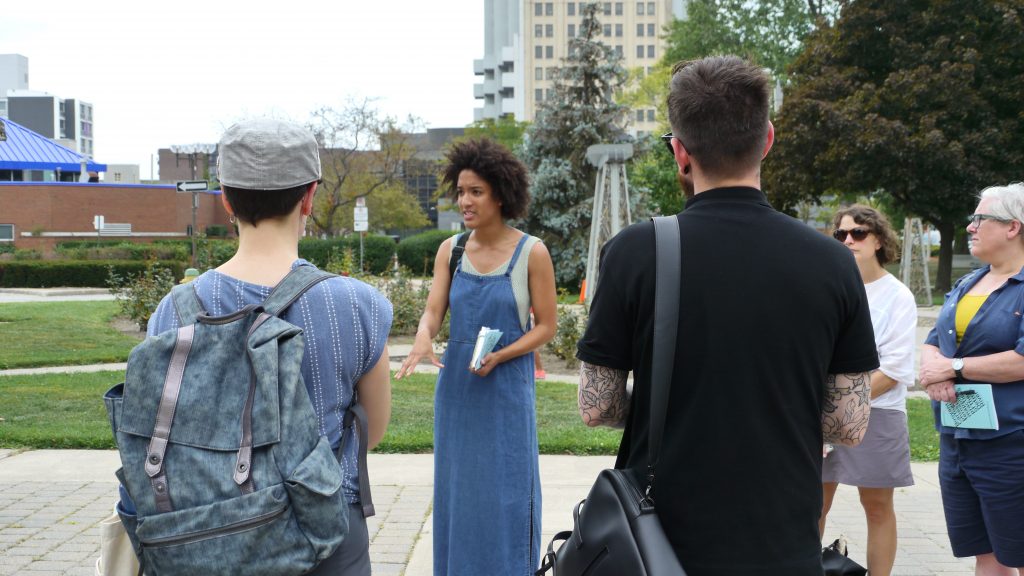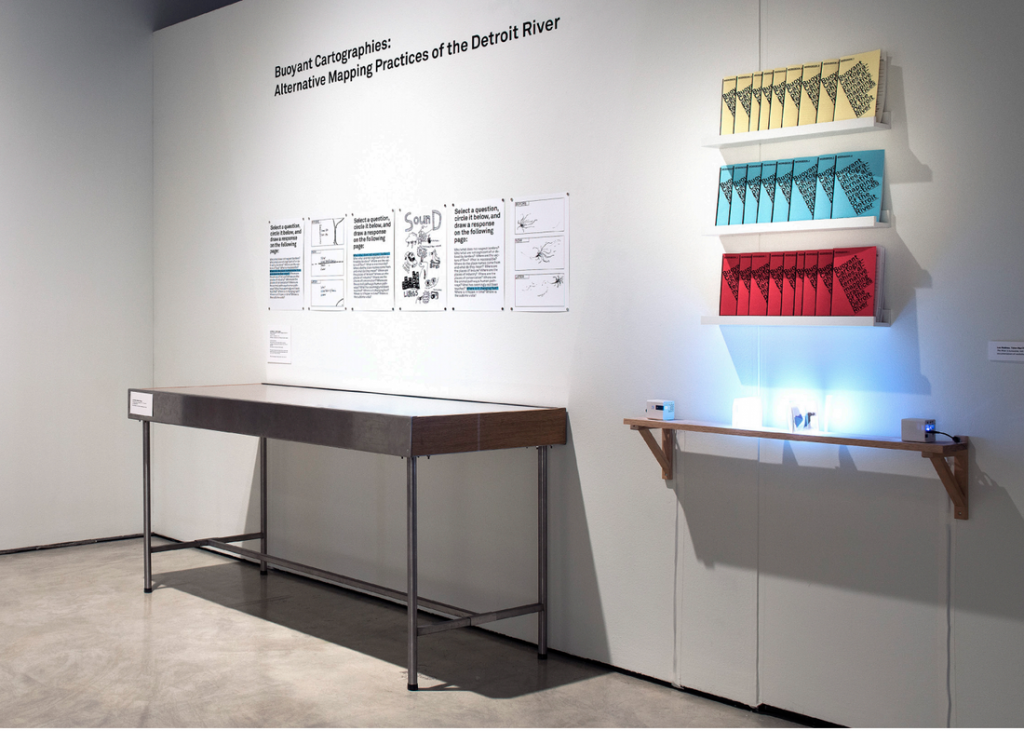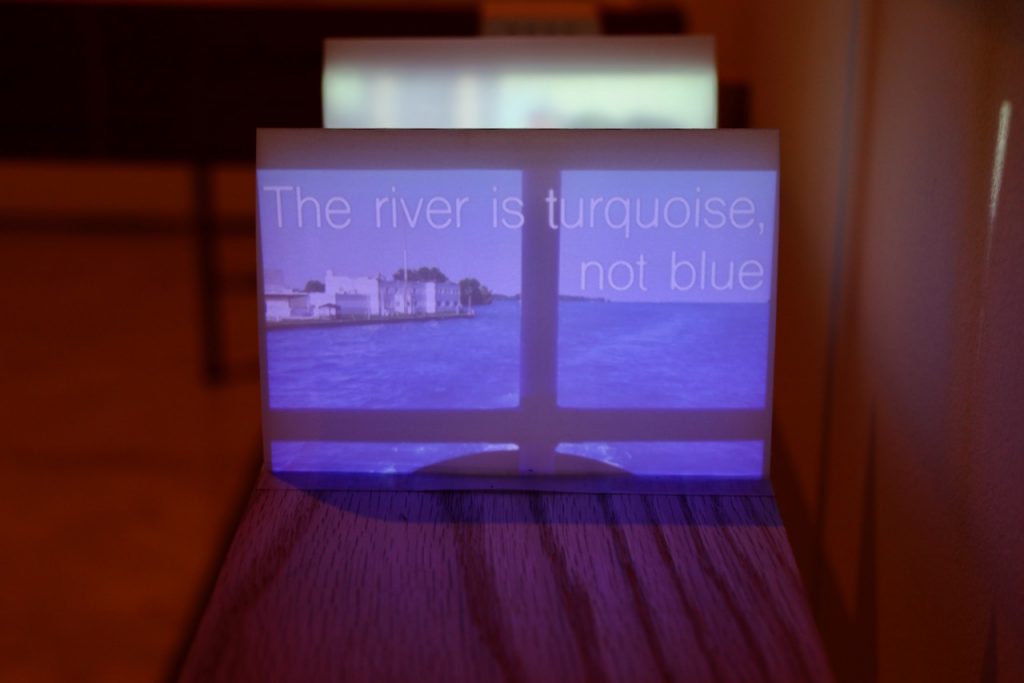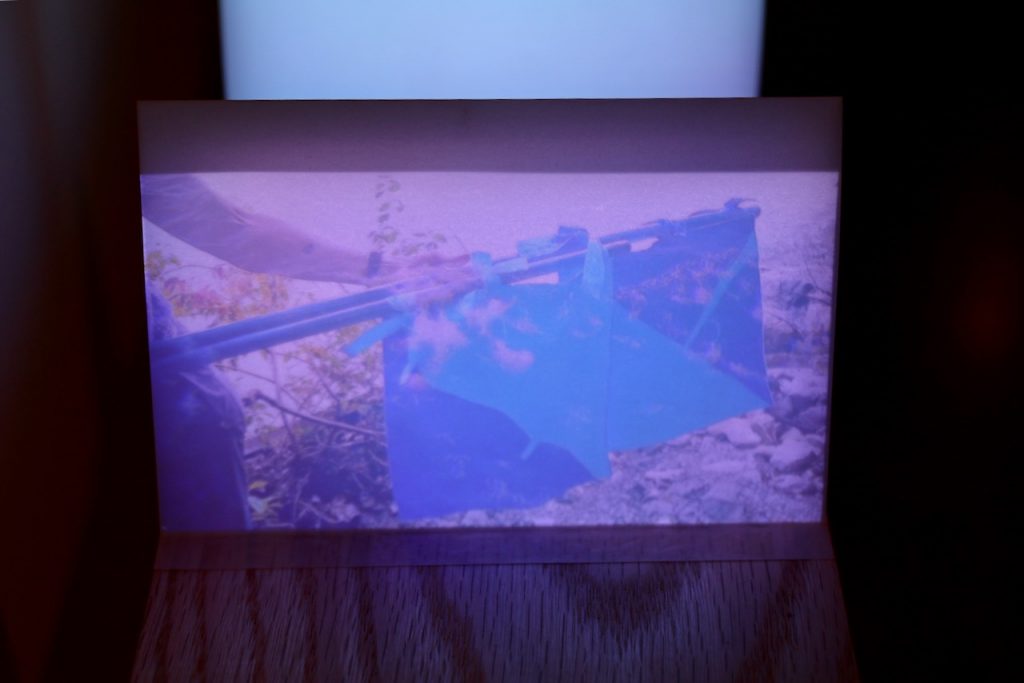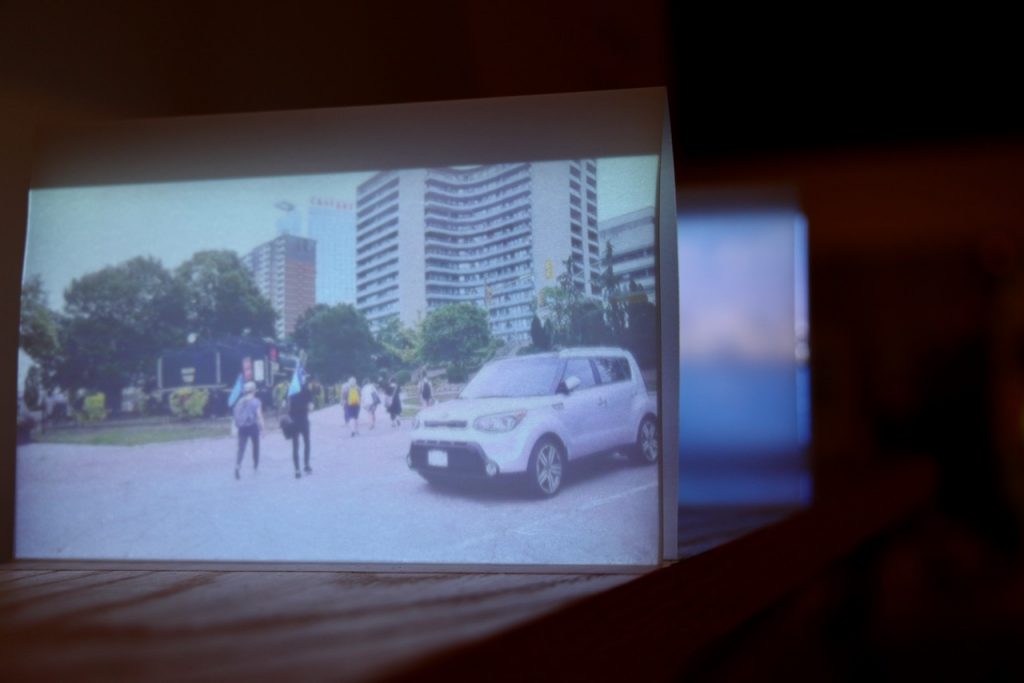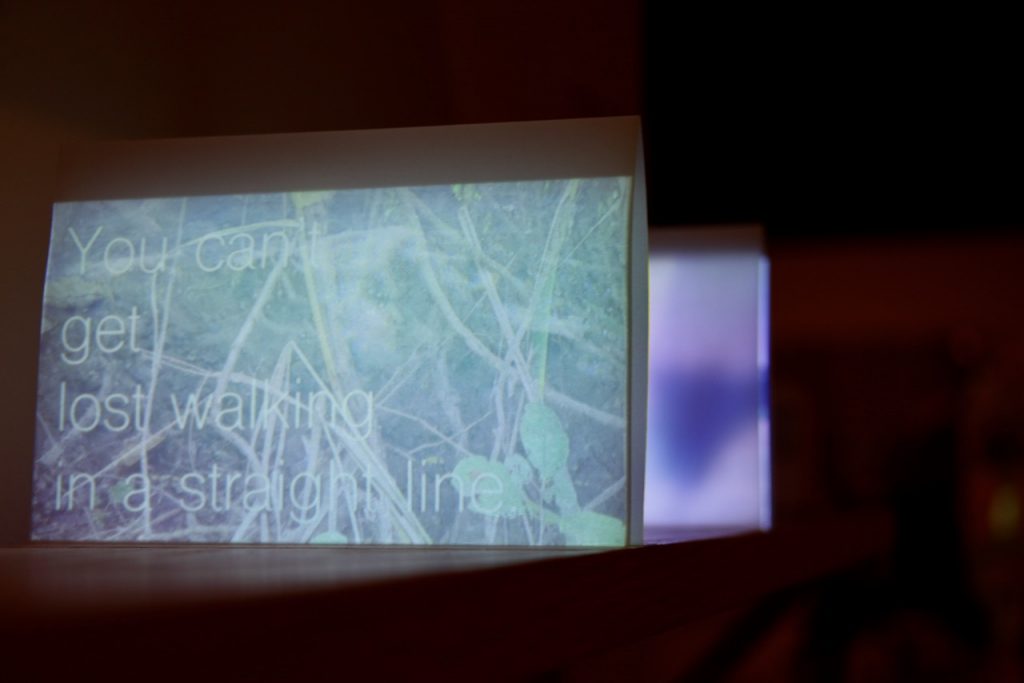Reclaiming Through Mapping: The Olympic Sites of Tokyo
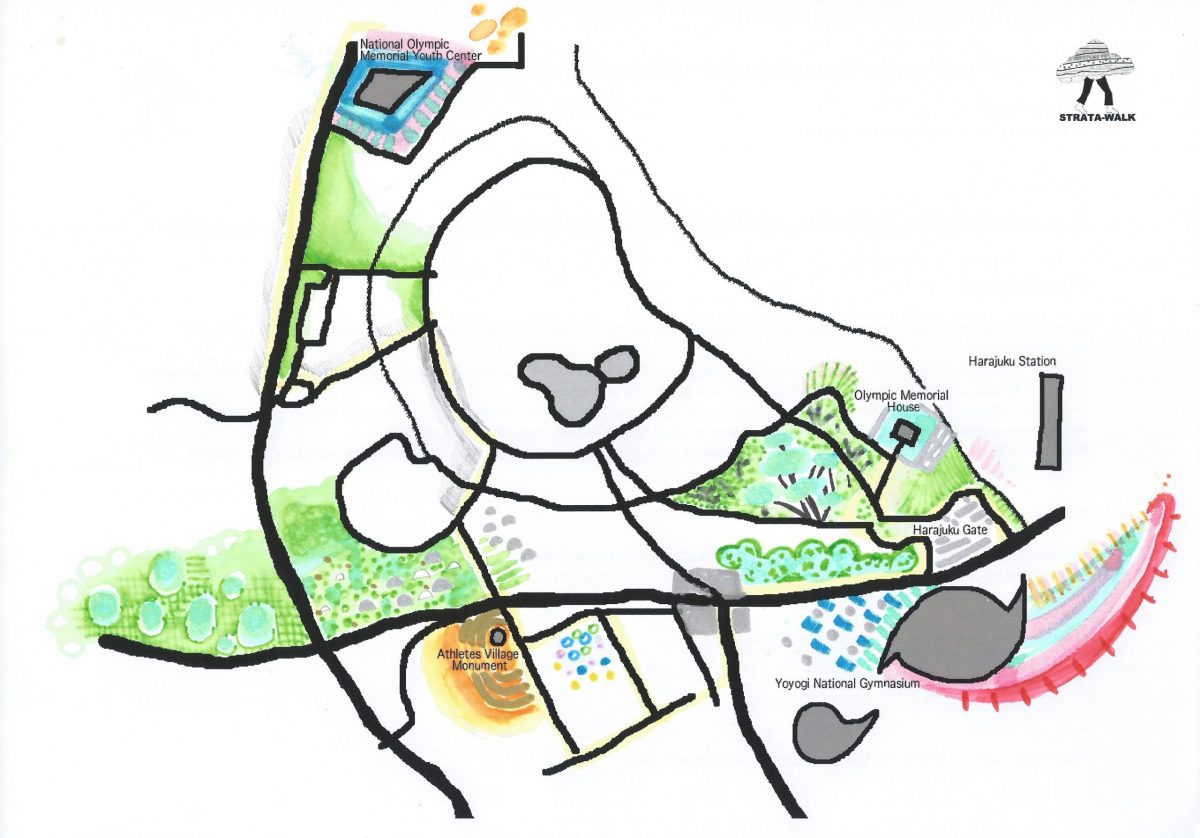
The International Cartographic Association (ICA) Commission on Art & Cartography organized the Pre-Conference Workshop “Reclaiming through Mapping: Olympic Sites of Tokyo” in July 2019. Some of these spaces, including the main conference venue, are on reclaimed land or artificial islands in Tokyo Bay built out of waste landfill. This workshop investigated the question of how place is constructed and mapped, using an experimental methodology developed by the artist-research collective Hamilton Perambulatory Unit, who led a participatory mapping walk in Tokyo that looks to uncover the layers of urban development history of the 2 Tokyo Olympics and the high-growth (1964) and post-growth (2020) periods they represent. This interdisciplinary workshop used hybrid spatial and sensory ethnography and intermedial approaches to map a site and distinguish the layers of time, history, materiality, and digital city-image. Participants contributed to the final multi-media strata-map of Tokyo’s Olympic sites.
Watch a video documentation shot and edited by Sarah Choi:
To begin this two-day workshop, the participants met at the Tokyo Metropolitan University for short presentations to contextualize the experimental and sensory mapping methodologies, before continuing the discussion on the trains while heading towards the Toyosu fish market for lunch (45min from Akihabara). They then visited the nearby construction site of the Athlete’s Village on Harumi Island while receiving background history on the area, and spent some time mapping the site. On the second day, they met at one of the 1964 Olympic sites to further explore mapping methodologies before heading back to Tokyo Metropolitan University to share results. The data collected helps answer the following research questions:
How does the official Olympic narrative affect the sites?
How do experimental cartographies work to investigate how place is constructed?
Strata-Maps Day 1: Harumi Island
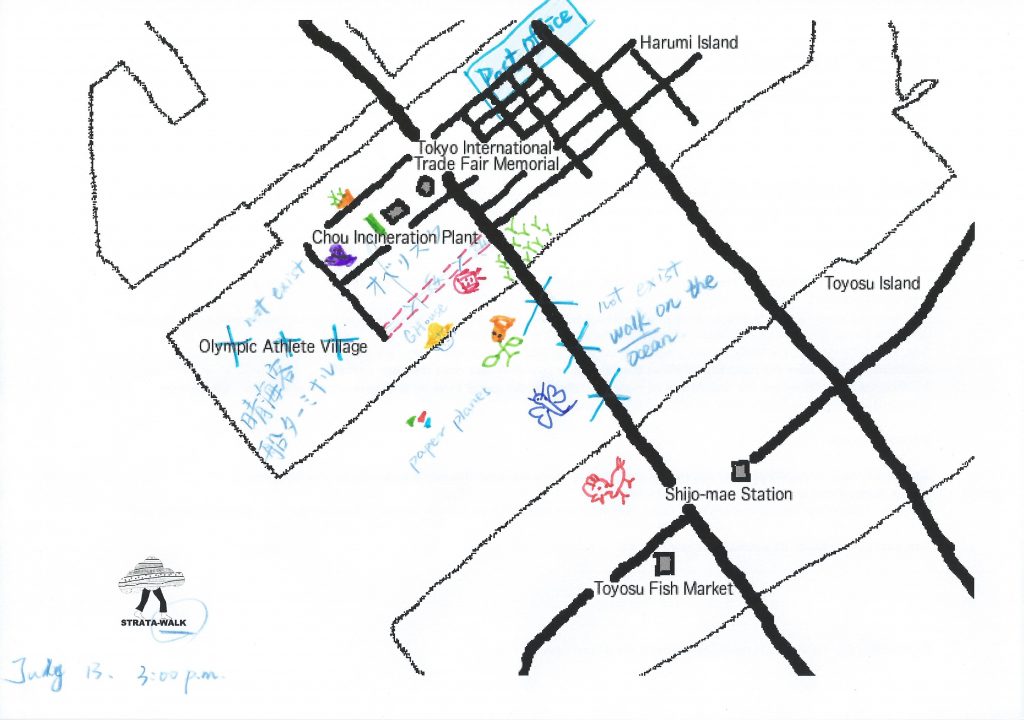
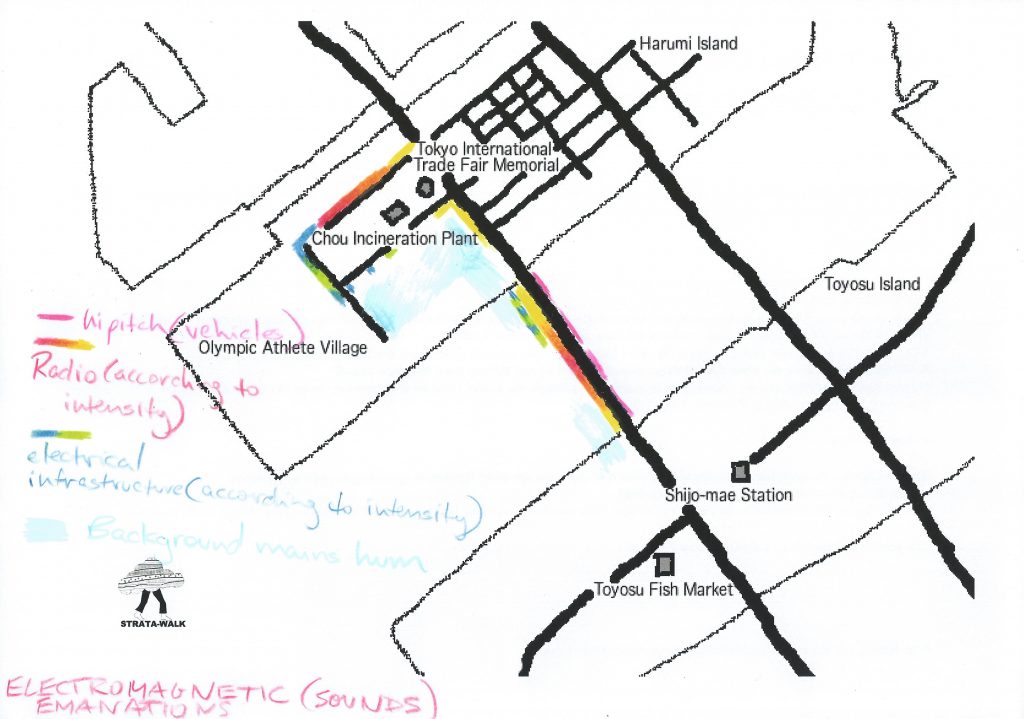
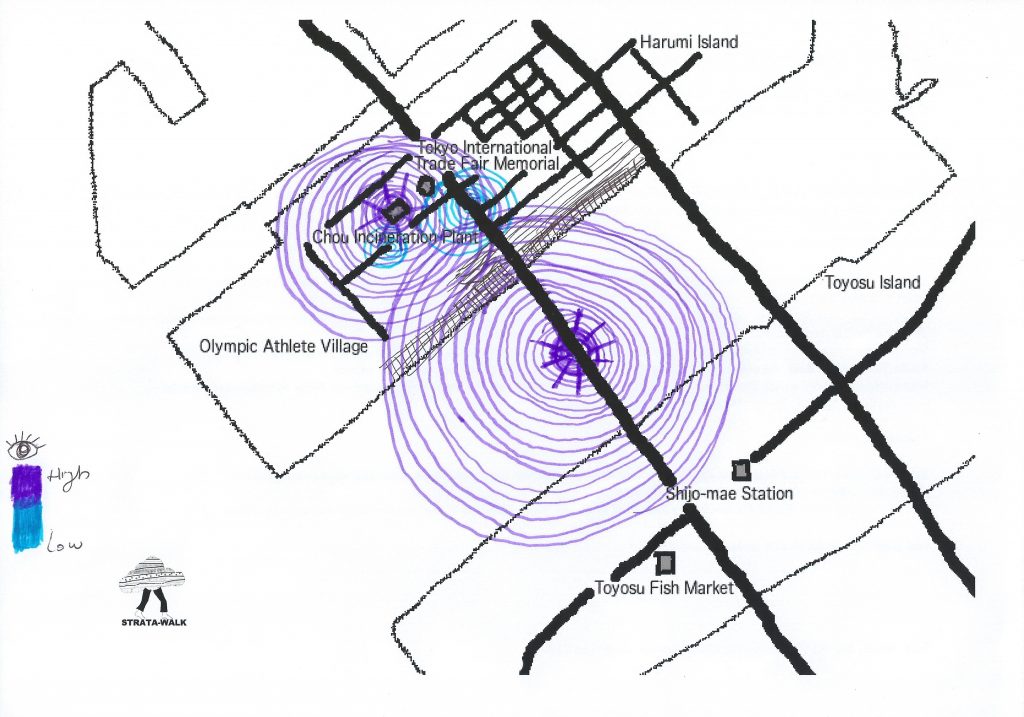
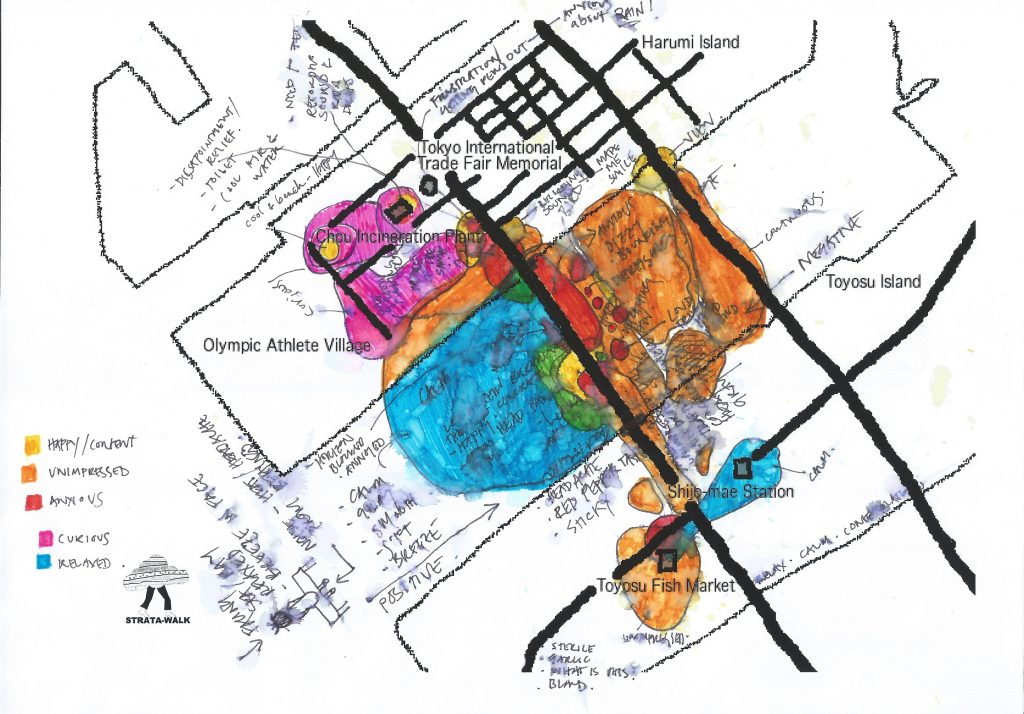
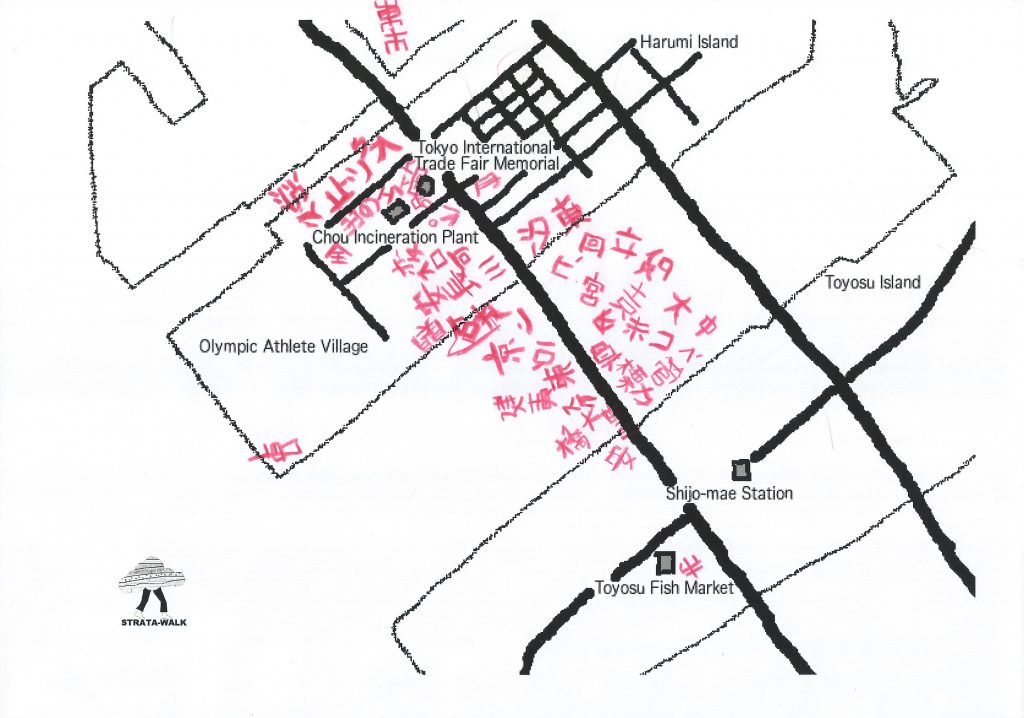
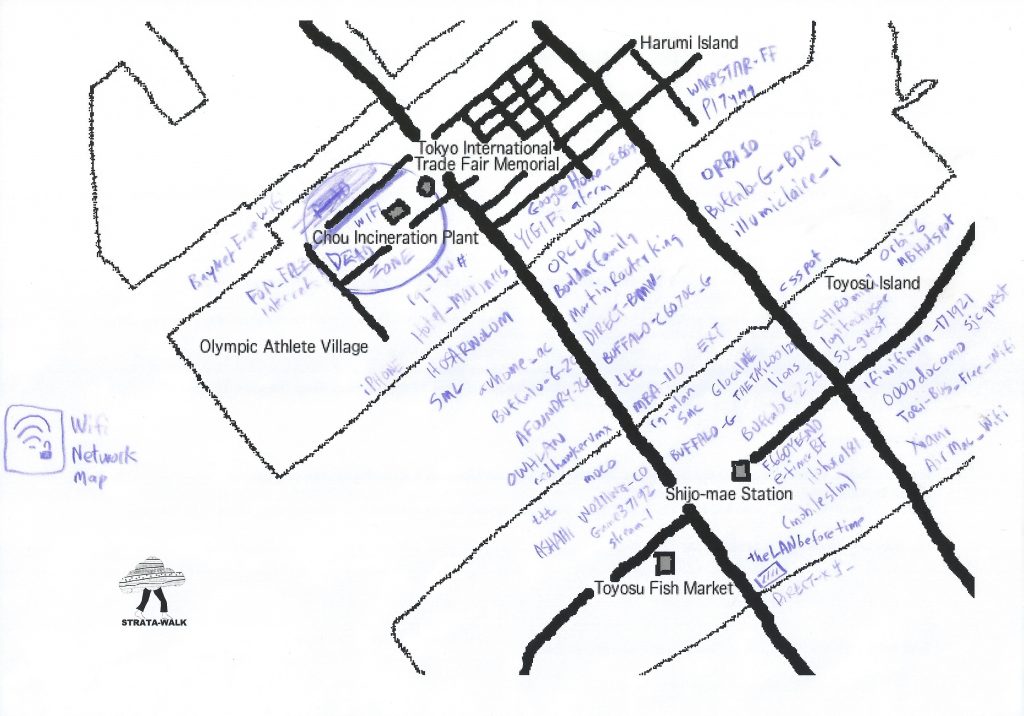
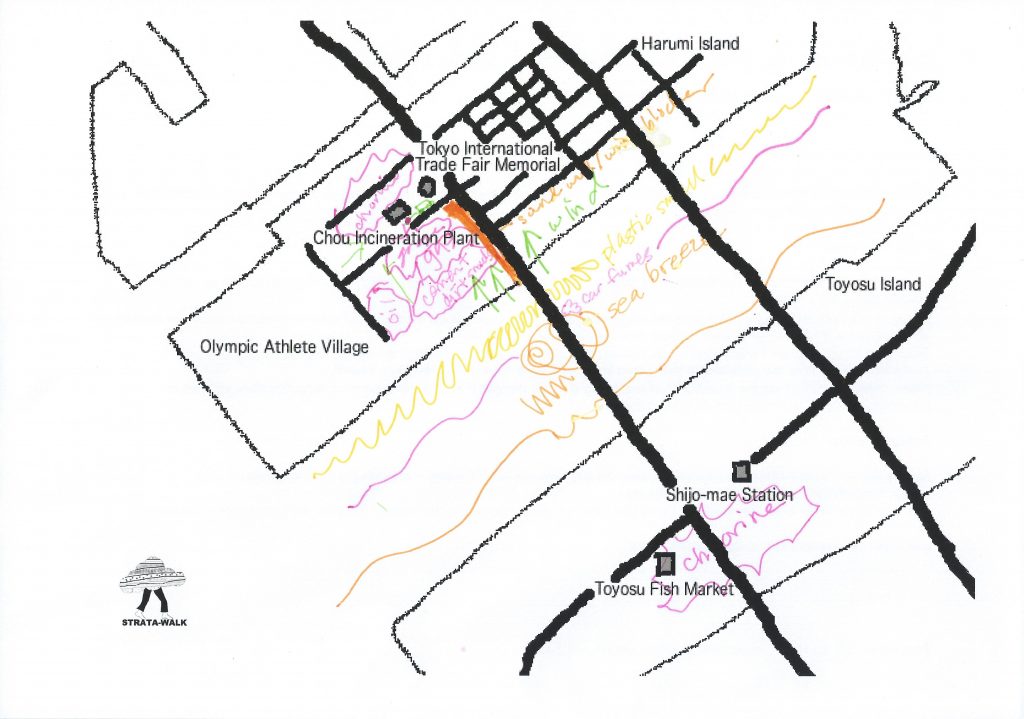
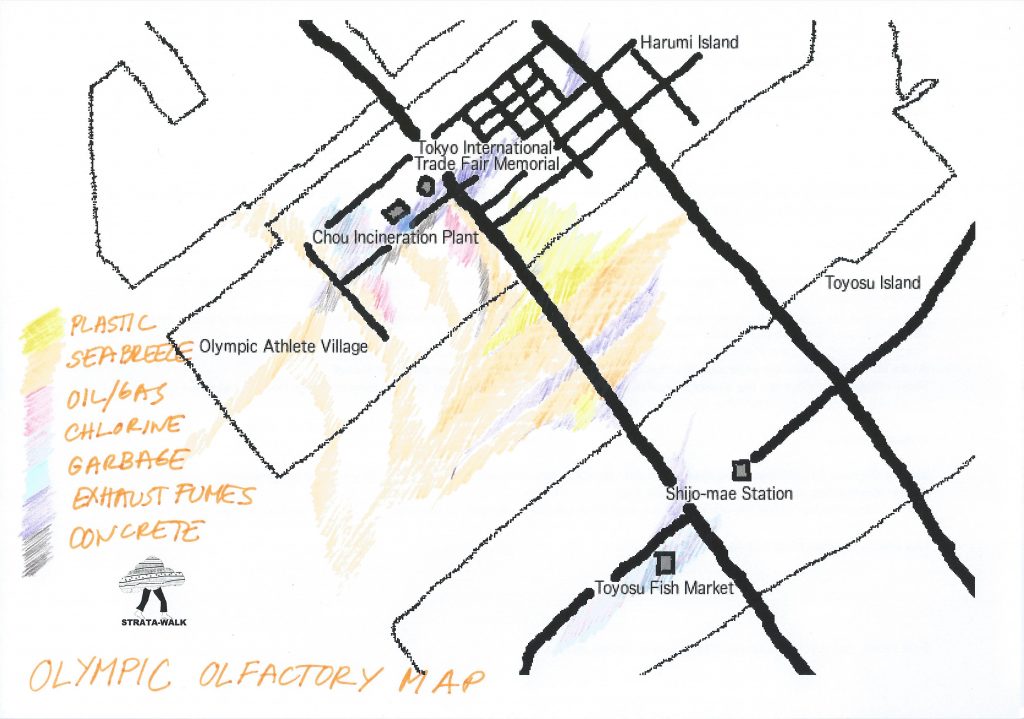
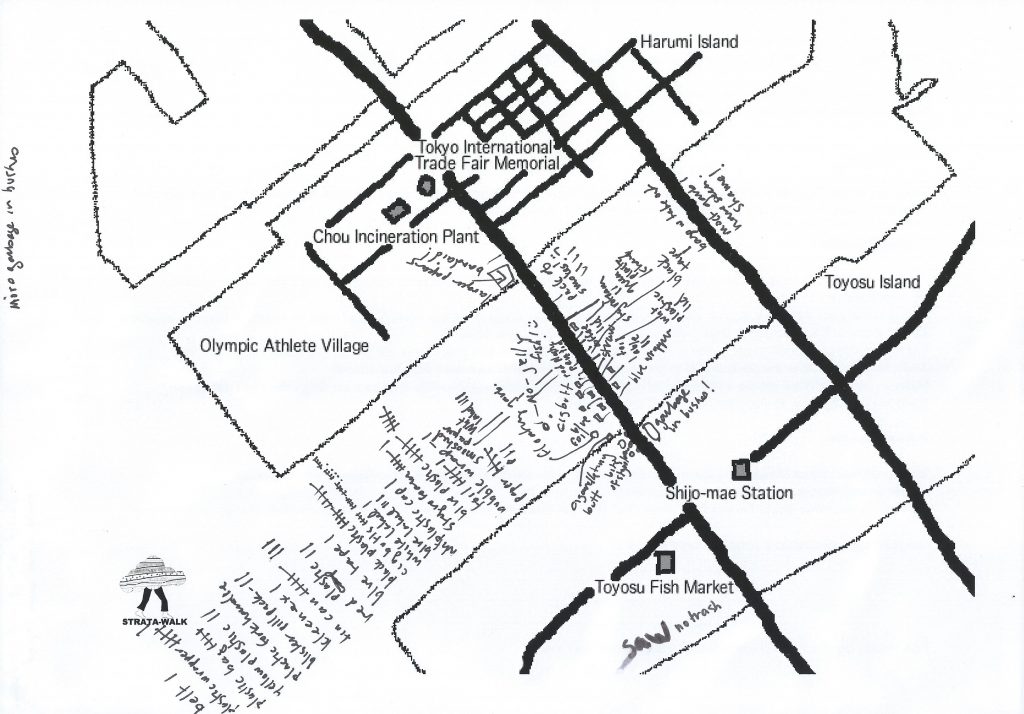
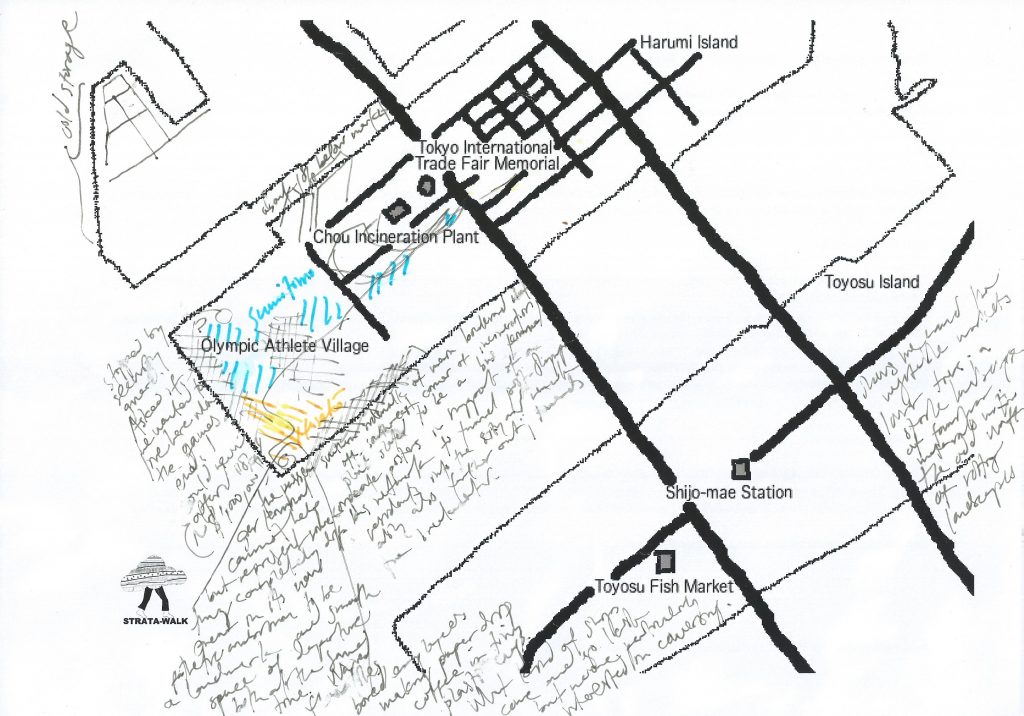

Strata-Maps Day 2: Yoyogi

